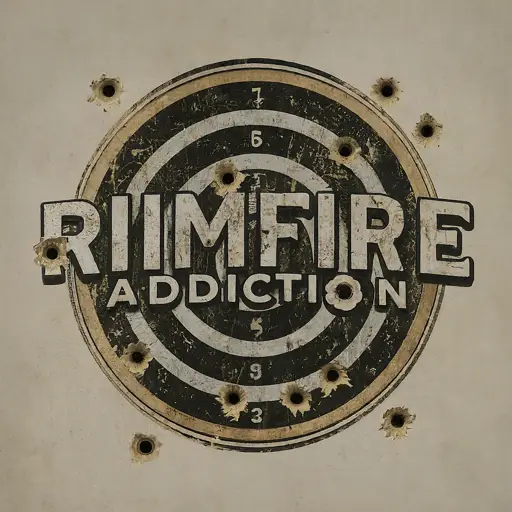Rimfire shooting is an excellent way for novice shooters to develop their skills, improve accuracy, and build confidence with rifles. These 10 essential rimfire target drills are designed to help beginners master the fundamentals of marksmanship while using affordable and low-recoil rimfire rifles. By regularly practicing these exercises, new shooters can quickly enhance their abilities and enjoy the rewarding world of precision target shooting.
Rimfire Target Drills
- Basic Sight Alignment and Trigger Control
This foundational drill focuses on the two most critical aspects of accurate shooting. Set up a large target at 25 yards and take slow, deliberate shots while concentrating on proper sight picture and smooth trigger pull. Aim to keep all shots within a 6-inch circle, gradually reducing group size as you improve. - Bench-Rest Shooting
Using a stable shooting bench and rest, practice firing five-shot groups at 50 yards. This drill helps isolate your shooting technique from factors like body movement and fatigue. Work on achieving consistent shot placement and tightening your groups over time. - Offhand (Standing) Position
While more challenging than supported positions, offhand shooting is an essential skill. Begin at 25 yards with a larger target, focusing on maintaining a steady stance and smooth trigger control. As your stability improves, gradually increase the distance and decrease target size. - Prone Position
Shooting from prone offers excellent stability for beginners. Practice at 50 yards, using a shooting mat or blanket for comfort. Concentrate on proper body alignment, breathing control, and follow-through after each shot. - Kneeling and Sitting Positions
These intermediate positions bridge the gap between prone and offhand shooting. Set up targets at 35 yards and alternate between kneeling and sitting positions. Focus on finding stable bone support and maintaining consistent shot placement. - Dot Drill
Create a target with five 1-inch dots arranged in a star pattern. From 25 yards, fire one shot at each dot, aiming to hit all five within a set time limit (start with 30 seconds and decrease as you improve). This drill combines accuracy with time pressure, helping develop quick target acquisition. - Transition Drill
Place two targets of different sizes at varying distances (e.g., a 4-inch circle at 25 yards and an 8-inch plate at 50 yards). Practice quickly transitioning between targets, firing one shot on each before switching. This improves target acquisition and trains you to adjust for different distances. - Countdown Drill
Start with five rounds in your magazine. Fire five shots at a 50-yard target, then four at 40 yards, three at 30 yards, two at 20 yards, and one at 10 yards. This drill helps you adapt to changing target sizes and distances while managing your ammunition. - Weak Hand and Support Hand Only
To build overall firearm control, practice shooting with your non-dominant hand. Begin at close range (10-15 yards) with larger targets, gradually increasing difficulty as you become more comfortable. This drill improves overall dexterity and prepares you for situations where you may need to shoot one-handed. - Timed Reload Drill
Set up a target at 25 yards and start with one round in the chamber and a spare magazine with five rounds. Fire one shot, perform a magazine change, and then fire the remaining five rounds. Focus on smooth, efficient reloads while maintaining accuracy. As you improve, add time pressure to the drill.

10 Bonus Tips for Effective Practice:
- Safety First: Always follow proper firearm safety rules and wear appropriate eye and ear protection.
- Start Slow: Begin each drill at a comfortable pace and distance, gradually increasing difficulty as your skills improve.
- Focus on Form: Prioritize proper technique over speed or group size, especially when learning new drills.
- Use a Shot Timer: Incorporating a shot timer into your practice sessions can help track progress and add an element of pressure to your training.
- Keep a Shooting Log: Record your results for each drill, noting areas of improvement and challenges to address in future sessions.
- Mix It Up: Rotate through different drills in each practice session to maintain engagement and work on various skills.
- Dry Fire Practice: Incorporate dry fire training at home to reinforce proper trigger control and sight alignment without the cost of ammunition.
- Seek Instruction: Consider taking a basic marksmanship course or working with an experienced shooter to refine your technique and receive personalized feedback.
- Stay Consistent: Regular practice, even in short sessions, is key to developing and maintaining your shooting skills.
- Have Fun: Remember that target shooting should be an enjoyable experience. Celebrate your improvements and don’t get discouraged by occasional setbacks.
By incorporating these 10 essential rimfire target shooting drills into your practice routine, you’ll build a solid foundation of marksmanship skills. As a beginner, focus on mastering the fundamentals before moving on to more advanced techniques. With dedication and consistent practice, you’ll soon see significant improvements in your accuracy, speed, and overall shooting performance. Remember to always prioritize safety and enjoy the process of becoming a skilled rimfire target shooter. Check out the recommended rimfire shooting guns & gear.



